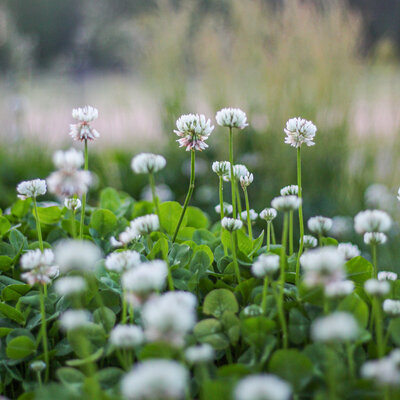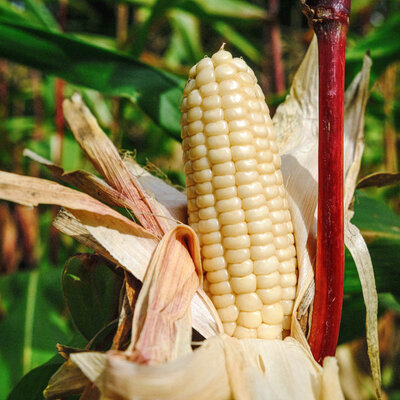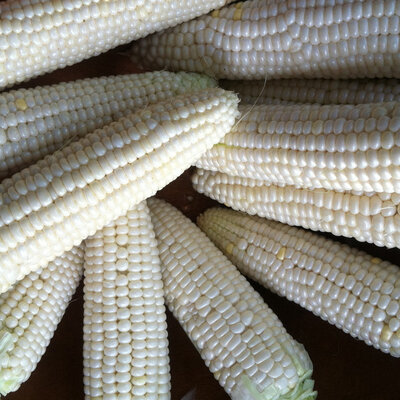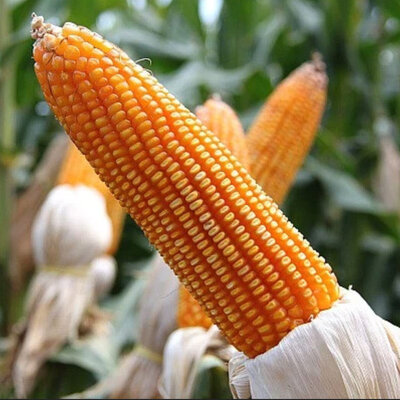
White - Clover
This small, perennial species is a common forage plant. White clover can be used as a green manure for its ability to enrich the soil with nitrogen, as well as to control weeds. Resistant to trampling, it is ideal for grassing paths.
Fast-growing, this clover can be mowed regularly, and the plant biomass, rich in nitrogenous matter, can be used to mulch or fertilize soil, as well as for animal feed.
Characteristics of white clover
White clover, Trifolium repens, is a perennial plant in the Fabaceae family. This ancient variety, referenced in Carl Von Linné's Species plantarum of 1753, is native to Europe. Due to the priorities assigned to agriculture in France during the Trente Glorieuses, there was little breeding work on white clover, and seed was mainly sourced from New Zealand. In the 1980s, the success of André Pochon's model in Brittany revived interest in growing English ryegrass in association with white clover.
With its small size, rapid regrowth and creeping habit, white clover is ideal for weed control and grazing. It can also be grown as a green manure and, like all legumes, enriches the soil with nitrogen while improving its structure. Highly resistant to trampling, it serves as ground cover during winter. Its green, petiolate leaves are made up of three or four leaflets. Its white, slightly pink, edible and melliferous flowers are grouped in spherical heads.
When to sow white clover?
White clover can be sown both after summer crops, from August to October, and in early spring, from March to May. This perennial plant thrives in sunny, well-drained soil.
Sow directly in the garden, in the open ground, at a rate of 2 and 5 g per square metre. Place the seeds in contact with the soil using a board.
White clover stands up well to summer heat, and its leaves retain their green color even in periods of drought. This perennial species can be mowed 1 or 2 times a year, at the start of flowering, and remains in place for two years. If it goes to seed, it reseeds spontaneously.
When does white clover flower?
White clover flowers, which are edible and highly melliferous, bloom from April to August, depending on the sowing date. For the rest of the year, the plant provides ground cover. Cut once or twice a year, it provides a plant biomass rich in nitrogenous matter, ideal for mulching or fertilizing soils, but also for animal feed. White clover can remain in place for up to two years.
These products may also be of interest to you
in the ground, on the fly
White clover can be sown after summer crops, from August to October, or in early spring, from March to May. Sow directly in place, on weeded and surface-scraped soil, at a rate of 2 to 5 g per m2. Press lightly to bring the seeds into contact with the soil.
March, April, May, August, September, October
April, May, June, July, August, September, October
in the ground
sunny
medium
all floor types
fees
Trifolium repens
mid-season
50 grams
White
From 10 to 20 cm
Europe
Species plantarum
This ancient variety originated in Europe. Because of the priorities assigned to agriculture in France during the Trente Glorieuses, there was little breeding work on white clover in France, with seed mainly imported from New Zealand. In the 1980s, the success of André Pochon's model in Brittany revived interest in growing English ryegrass in association with white clover.
Carl Von Linné











